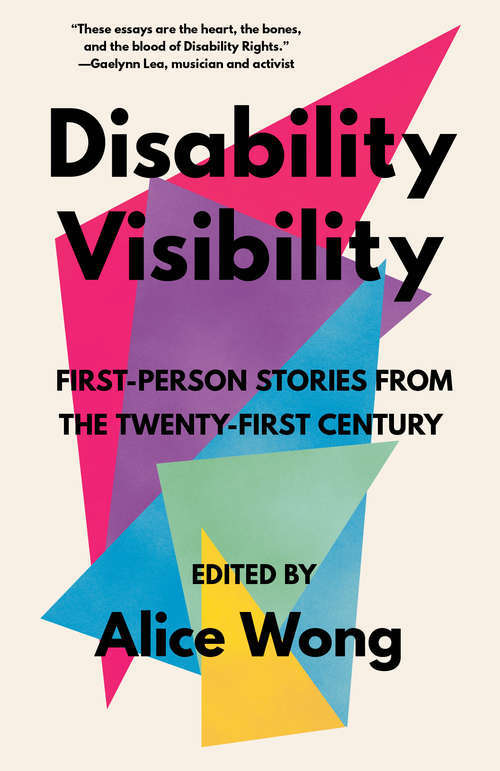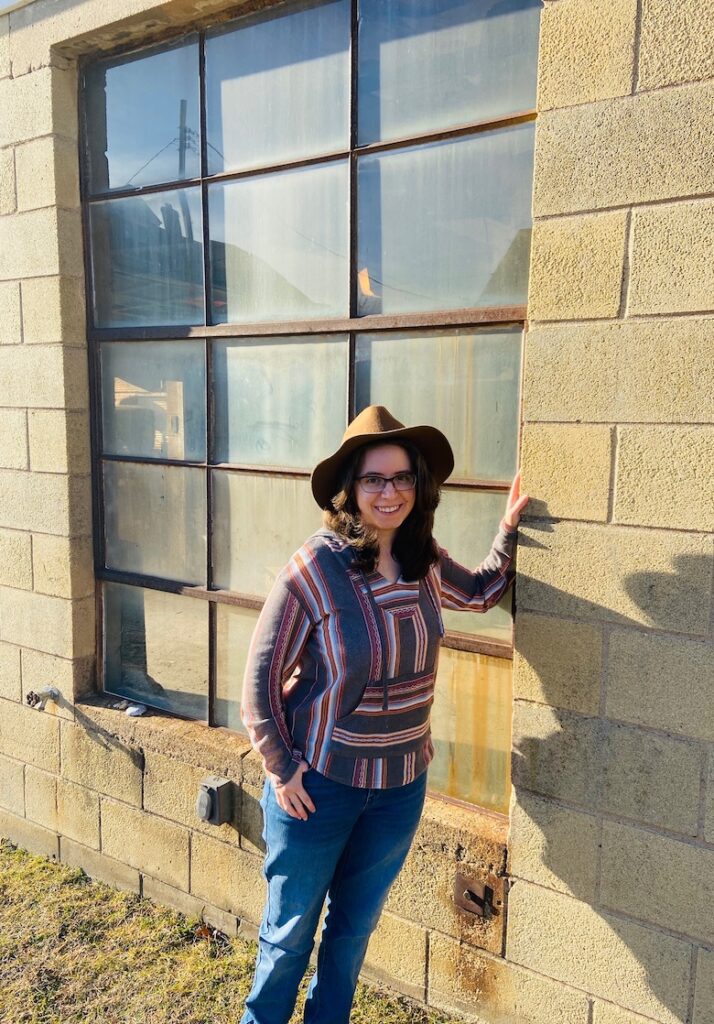 The Alice Wong-edited anthology Disability Visibility: First-Person Stories from the Twenty-First Century (Vintage, June 2020), which highlights disability writers and activists, contains essays, eulogies, and interviews. With a wide variety of writing styles, experiences, and content, Disability Visibility is the perfect anthology to address disability advocacy. Published just before the thirtieth anniversary of the Americans with Disabilities Act (ADA), the anthology celebrates marginalized voices while embracing living with a disability, celebrating how far we have come, and imagining a more inclusive future. Wong wants to: “[…] see more stories about the disabled experience in the present while honoring the past; […] to see more stories about everyday people rather than the usual “very important people” duly mentioned at each ADA anniversary; and […] to increase the diversity of the mainstream representation of disability, which remains very white and very male […]”
The Alice Wong-edited anthology Disability Visibility: First-Person Stories from the Twenty-First Century (Vintage, June 2020), which highlights disability writers and activists, contains essays, eulogies, and interviews. With a wide variety of writing styles, experiences, and content, Disability Visibility is the perfect anthology to address disability advocacy. Published just before the thirtieth anniversary of the Americans with Disabilities Act (ADA), the anthology celebrates marginalized voices while embracing living with a disability, celebrating how far we have come, and imagining a more inclusive future. Wong wants to: “[…] see more stories about the disabled experience in the present while honoring the past; […] to see more stories about everyday people rather than the usual “very important people” duly mentioned at each ADA anniversary; and […] to increase the diversity of the mainstream representation of disability, which remains very white and very male […]”
While there is a lack of representation of disability in the media, “One in five people in the United States lives with a disability,” states the back jacket of the anthology. Disability Visibility allows those who are disabled to speak for and represent themselves. Ironically, the anthology was released during the COVID-19 lockdowns, a period when disabled people saw their overlooked concerns suddenly accommodated for everyone else.
I live with juvenile rheumatoid arthritis, which means my chronic illness and the immune suppression it causes is invisible. Long ago, I figured out being immunocompromised means, at times, altering certain activities due to being at an increased risk for becoming seriously ill from common illnesses which would not affect others, such as the common cold. Currently, the coronavirus is forcing healthy, non-immunosuppressed individuals to alter their lives by canceling trips, avoiding crowds, wearing a mask, and forcing many able-bodied individuals to experience what immunosuppressed individuals experience daily. The collective uncertainty everyone is feeling is how immunocompromised individuals feel every time there is a measles or flu outbreak. In the anthology, s.e. smith writes about uneasiness. Smith states, “It must be an unsettling experience, to be invited into our space. To be on the other side of the access divide.” Although smith’s story centers on Descent, a wheelchair dance piece choreographed by Alice Sheppard and Laurel Lawson, the statement is applicable to our current situation. Coronavirus has given everyone a glimpse of the access divide.
Those with disabilities are pushed further behind the access line. Add the intersections of race, gender, economic status, and sexuality and the line is further out of reach. Among other disadvantages, those who are disabled can be denied medical care and ventilators, which violates both Section 504 of the Americans with Disabilities Act and basic human compassion; some cannot social distance from caregivers; and others are rightfully distressed when they see accommodations being granted that they were denied — working from home or zooming classes, for example.
Even those, like myself, who have never lived in a world without the ADA have had accommodations dismissed as too disruptive, not feasible, or because a disability is invisible. My hope is that the ease in which accommodations were made for everyone during the last year translates into greater accommodation access for the disabled. Yet, if my wish for the future does not come true, it is a consolation to know that the writers and activists published in Disability Visibility have created an inclusive community which will continue to fight for equality. Society needs to hear the voices of disabled writers in all genres. This anthology is a step towards that goal as each piece included has a strong unique voice making the varying perspectives on disability paint a full and all-encompassing view of those living with disabilities.
Disability Visibility succeeds in allowing authors to evaluate their disabilities, to examine how others treat them, and to appraise how they treat themselves. Each anthologized piece flows deep with self-reflection, leading to contemplation on how to change the unique barriers each person faces in society. A particularly poignant moment occurs in Keah Brown’s essay, “Nurturing Black Disabled Joy.” On finding joy Brown writes: “The reality of disability and joy means accepting that not every day is good but everyday has openings for small pockets of joy […] Instead of saying what I hated about myself, I spoke aloud what I liked about myself. In doing this, hope and joy became precious, sacred, a singular and collective journey […] I shared my journey with the world because I wanted them all to know that who I am becoming is only possible because of who I was, and that is what makes it so beautiful.”
Like Brown’s critically honest introspection, Disability Visibility breaks down barriers and preconceived notions. There could be no better time for Disability Visibility to hit the shelves than during the pandemic. Wong’s collection confers visibility to those who society often deems invisible.
 Sara Pisak earned an MA and MFA in nonfiction from Wilkes University. She is currently associate editor at The Disruptive Quarterly and a staff reviewer at Glass Poetry Press. Sara participates in the Poetry in Transit Program, and she has recently published work in Door = Jar, Whale Road Review, the Deaf Poets Society, Five:2:One Magazine, Moonchild Magazine, Yes Poetry, and Boston Accent.
Sara Pisak earned an MA and MFA in nonfiction from Wilkes University. She is currently associate editor at The Disruptive Quarterly and a staff reviewer at Glass Poetry Press. Sara participates in the Poetry in Transit Program, and she has recently published work in Door = Jar, Whale Road Review, the Deaf Poets Society, Five:2:One Magazine, Moonchild Magazine, Yes Poetry, and Boston Accent.


